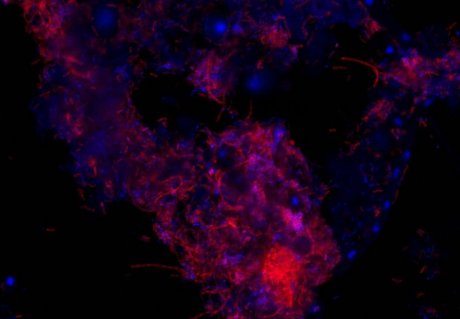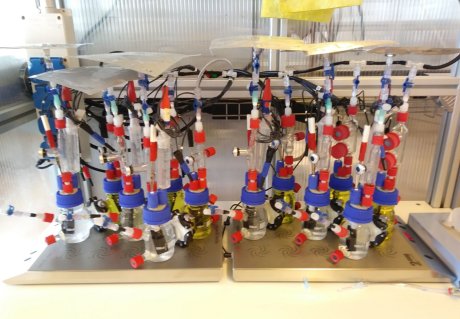
Membrane-based and bio-electrochemical treatment of wastewater
Treating wastewater, while recovering valuable resources, is increasingly important to close nutrient and water cycles and contribute to a sustainable economy. Membrane and (bio-)electrochemical technologies generally provide an effective water treatment method.
In this research theme we aim to develop electrochemical, bioelectrochemical and membrane-based water-treatment technologies to efficiently recover resources and produce clean water.
Applications
The use of electricity allows the growth of specific microorganism on electrodes, providing a specific advantage for certain desired chemical conversions, while energy use is low, compared to traditional treatment methods. Possible applications for bio-electrochemical based water treatment methods are numerous.
One example of such an application concerns mercaptans. This smelly organosulfur compounds are released from decaying organic matter and are present, among others, in wastewater treatment plants and natural gas. Burning gas containing mercaptans results in the formation of sulfur dioxide (SO2), that causes environmental damage due to acidification. Mercaptans can be removed by chemical oxidation, but this method is rather costly and inefficient. The application of bio-electrochemical technologies, might provide a more efficient and cost-effective treatment method. Also, the recovery of nutrients from waste streams, like manure, can become more efficient by using bio-electrochemical treatment.
Research areas
The most important ETE research areas and projects where (bio)-electrochemical technologies are used include:
- Electrodialysis and capacitive deionization for desalination and recovery of nutrients This research focuses on using mathematical models to tune and optimize the removal and recovery of components, like sodium (Na+, desalination) or nutrients, like phosphate, from wastewater and manure.
- Producing so-called ‘green oxidants’ Electrochemical processes in combination with membranes are used to produce hydrogen peroxide (H2O2) from water. This green oxidant can be used to disinfect industrial pipes and equipment.
- Mercaptan removal from industrial gas streams Using electricity and microorganisms, mercaptans are converted into hydrogen sulfide (H2S). Using traditional processes, hydrogen sulfide can easily be further treated and converted into valuable elemental? sulfur that can be reused in, for example, agriculture.
- Ammonium removal from wastewater By applying electrochemistry in combination with microorganisms and membranes, ammonium is removed from waste streams and recovered as a liquid ammonium fertilizer, such as ammonium nitrate.















